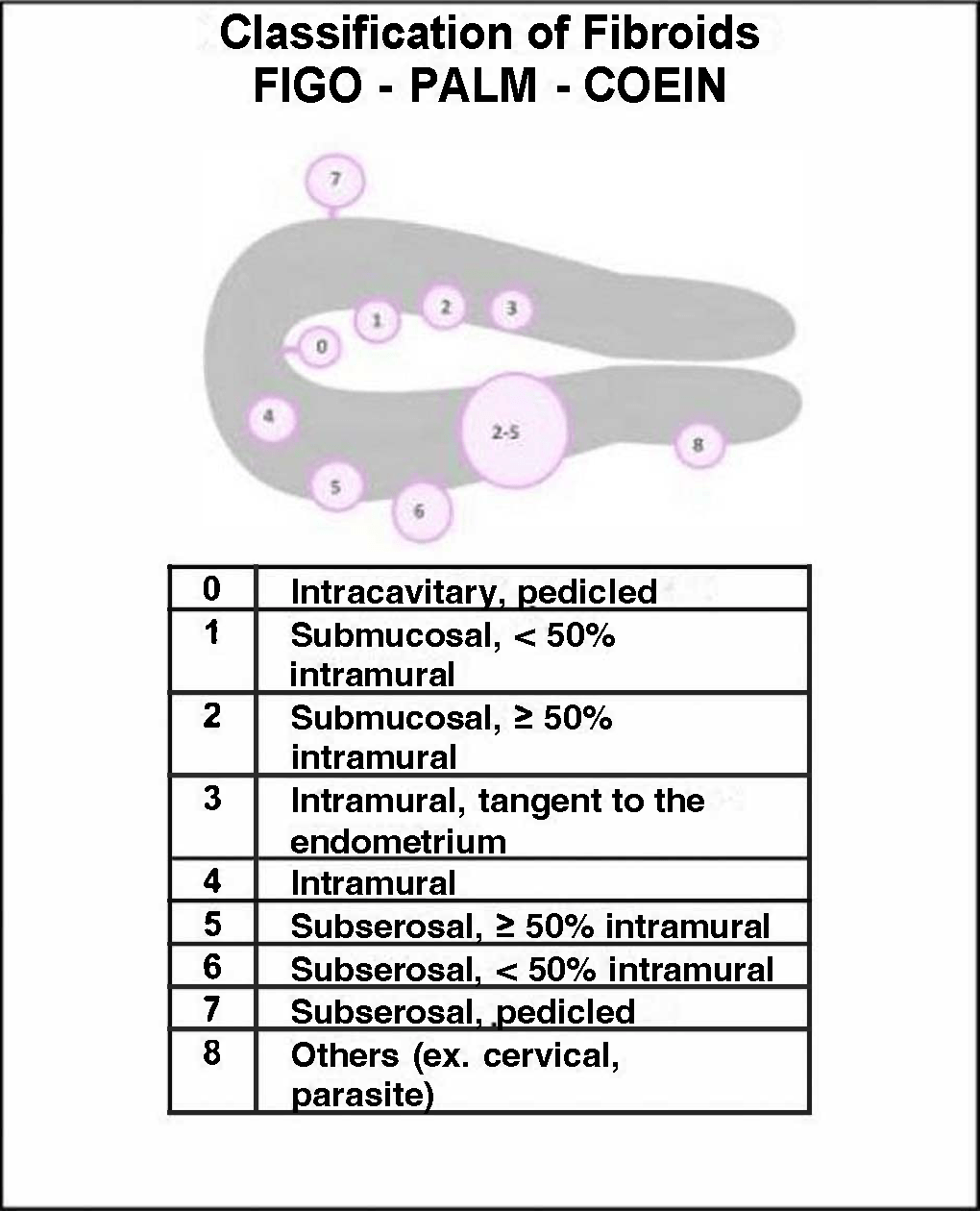Uterine Fibroids
What is the uterus?
The uterus is an organ of the feminine reproductive system in the pelvic area, behind and above the bladder, ahead of the rectum, continuing down the vagina.
It is an organ with a central cavity, the uterine cavity, covered by the endometrium. The uterine wall is made mostly by a muscular layer called the myometrium.
The endometrium proliferates during the menstrual cycle and flakes off during menstruation, being externalized through the uterine cavity to the vagina and then to the exterior.
The endometrium and myometrium are separated by a layer called junctional line or transitional zone that defines the transition between the endometrium and the myometrium.
The uterus has different areas, being the uterus fundus the superior one, the cervix the inferior, and the body the biggest area, between the fundus and the cervix. The uterine cavity communicates with the interior of the uterine tubes (Fallopian tubes) at the uterine fundus level.
What are the causes for the development of fibroids?
Fibroids are benign tumors developed in the uterus muscular wall (myometrium). They are benign tumors that are developed since the beginning of fertile age, after the first menstruation, and end with menopause. This is because they are tumors that depend on the hormonal stimulus of progesterone and estrogens to develop and grow.
The main risk factors for fibroids development are age and race. They are very rare during adolescence and start being more frequent until women reach menopause.
That is to say, the chance of a 40-50-years-old woman being diagnosed with fibroids is much higher than in a 20-30-years-old woman.
We often treat patients between 30 and 50 years old. Black women have 2 to 3 more chances to develop fibroids and to complain more, in comparison with Caucasian women.
Women who had been pregnant are less likely to develop fibroids, as pregnancy has been associated with the reduction of fibroids size.
A red meat-rich diet, drinking alcohol, a vegetable-poor diet, and Vitamin D deficiency have been associated with fibroids development. On the other hand, eating 4 or more portions of dairy products daily is associated with a less probability of having fibroids. Symptomatic fibroids (with complaints) occur approximately in 25%-50% of women of fertile age.

What types of fibroids are there?
According to the location of fibroids inside the uterus, they can be classified as:
Subserosal fibroids – develop in the external part of the uterus wall and grow outwards.
Intramural fibroids – are the most frequent and develop in the uterine wall, on the myometrium.
Submucosal fibroids – are less frequent and develop in the internal surface of the uterine cavity walls, on the endometrium, growing into the uterine cavity.

What types of fibroids are there?
According to the location of fibroids inside the uterus, they can be classified as:
Subserosal fibroids – develop in the external part of the uterus wall and grow outwards.
Intramural fibroids – are the most frequent and develop in the uterine wall, on the myometrium.
Submucosal fibroids – are less frequent and develop in the internal surface of the uterine cavity walls, on the endometrium, growing into the uterine cavity.
What are the treatment options for fibroids?
When symptomatic, fibroids should be treated. The first step is a medical treatment that usually consists of anti-inflammatory medication, hormones-based medication, oral contraceptives, or intrauterine devices.
The effect is often temporary and after its interruption, it is possible to see the fibroids and bleeding size increase, or other complaints. This way, a more invasive treatment is often necessary.
Until a few years ago, the only treatment option was surgery to remove fibroids (myomectomy) or the whole uterus (hysterectomy).
Uterine embolization was developed as a minimally invasive technique, as an alternative to surgery, to treat fibroids less painfully, with a faster recovery while preserving the uterus, enabling future pregnancies.
Myomectomy – is the removal of each fibroid. It may not be ideal if they are multiple or big. In these situations, embolization is the only alternative to hysterectomy. Hysterectomy – is the full removal of the uterus. It eliminates fibroids, but both hospital stay and recovery time are long. And hysterectomy eliminates the possibility of a posterior pregnancy.

What are fibromatosis and its symptoms?
When there are a lot of fibroids, it is called fibromatosis.
Fibroids might not be symptomatic and can only be detected in routine exams. However, the presence of both fibroids and fibromatosis can lead to symptoms like:
- Long-term menstrual periods, sometimes with bleeding that can result in anemia,
- Pelvic pain and/or in the lumbar area,
- Pain during intercourse,
- Feeling of heaviness and abdomen size increase,
- Constipation,
- Frequent need to urinate or difficulty in urinating,
- Spontaneous abortions.

What are fibromatosis and its symptoms?
When there are a lot of fibroids, it is called fibromatosis.
Fibroids might not be symptomatic and can only be detected in routine exams. However, the presence of both fibroids and fibromatosis can lead to symptoms like:
- Long-term menstrual periods, sometimes with bleeding that can result in anemia,
- Pelvic pain and/or in the lumbar area,
- Pain during intercourse,
- Feeling of heaviness and abdomen size increase,
- Constipation,
- Frequent need to urinate or difficulty in urinating,
- Spontaneous abortions.
Get in Touch.
Submit the form to schedule your appointment with Dr. Tiago.
Get in Touch.
Submit the form to schedule your appointment with Dr. Tiago.




